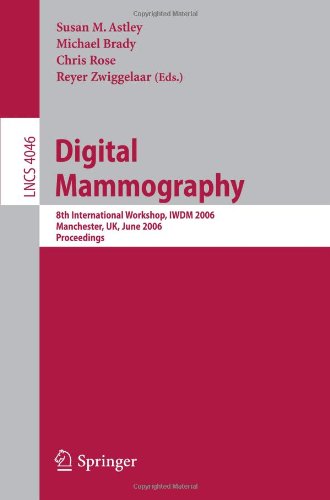

Most ebook files are in PDF format, so you can easily read them using various software such as Foxit Reader or directly on the Google Chrome browser.
Some ebook files are released by publishers in other formats such as .awz, .mobi, .epub, .fb2, etc. You may need to install specific software to read these formats on mobile/PC, such as Calibre.
Please read the tutorial at this link: https://ebookbell.com/faq
We offer FREE conversion to the popular formats you request; however, this may take some time. Therefore, right after payment, please email us, and we will try to provide the service as quickly as possible.
For some exceptional file formats or broken links (if any), please refrain from opening any disputes. Instead, email us first, and we will try to assist within a maximum of 6 hours.
EbookBell Team

0.0
0 reviewsThis volume of Springer’s Lecture Notes in Computer Science series records th the proceedings of the 8 International Workshop on Digital Mammography (IWDM), which was held in Manchester, UK, June 18–21, 2006. The meetings bringtogetheradiversesetofresearchers(physicists,mathematicians,computer scientists, engineers), clinicians (radiologists, surgeons) and representatives of industry, who are jointly committed to developing technology, not just for its ownsake,but to supportclinicians inthe earlydetection andsubsequentpatient management of breast cancer. The conference series was initiated at a 1993 meeting of the SPIE in San Jose, with subsequent meetings hosted every two years by researchers around the world. Previous meetings were held in York, Chicago, Nijmegen, Toronto, Bremen, and North Carolina. It is interesting to re?ect on the changes that have occurred during the past 13 years. Then, the dominant technology was ?lm-screen mammography; now it is full-?eld digital mammography. Then, there were few screening programmes world-wide; now there are many. Then, there was the hope that computer-aided detection (CAD) of early signs of cancer might be possible; now CAD is not only a reality but (more importantly) a commercially led clinical reality. Then, algorithmswerealmostentirelyheuristicwithlittleclinicalsupport;nowthereis arequirementforsubstantialclinicalsupportforanyalgorithmthatisdeveloped and published. However, upon re?ection, could we have predicted with absolute certainty what would be the key questions to be addressed over the subsequent (say) six years? No! That is the nature, joy, and frustration of research. There are more blind alleys to explore than there are rich veins that bring gold (in all senses of that analogy!).